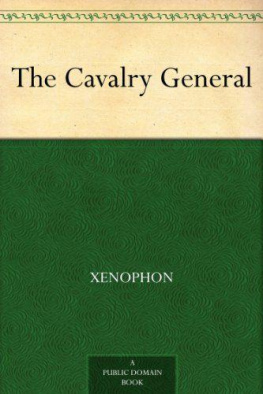Jim Piecuch - Cavalry of the American Revolution
Here you can read online Jim Piecuch - Cavalry of the American Revolution full text of the book (entire story) in english for free. Download pdf and epub, get meaning, cover and reviews about this ebook. year: 2012, publisher: Westholme Publishing, genre: History. Description of the work, (preface) as well as reviews are available. Best literature library LitArk.com created for fans of good reading and offers a wide selection of genres:
Romance novel
Science fiction
Adventure
Detective
Science
History
Home and family
Prose
Art
Politics
Computer
Non-fiction
Religion
Business
Children
Humor
Choose a favorite category and find really read worthwhile books. Enjoy immersion in the world of imagination, feel the emotions of the characters or learn something new for yourself, make an fascinating discovery.
- Book:Cavalry of the American Revolution
- Author:
- Publisher:Westholme Publishing
- Genre:
- Year:2012
- Rating:5 / 5
- Favourites:Add to favourites
- Your mark:
Cavalry of the American Revolution: summary, description and annotation
We offer to read an annotation, description, summary or preface (depends on what the author of the book "Cavalry of the American Revolution" wrote himself). If you haven't found the necessary information about the book — write in the comments, we will try to find it.
Nine Historians and Writers Investigate the Role of Cavalry in the War for Independence
From the bitterly contested no-mans-land between American and British lines in New York and New Jersey to the scorching pine forests of the South, the cavalry of both armies fought valiantly throughout the American Revolution. This volume explores several aspects of cavalrys role in the war, which has often been overlooked in general histories. The topics covered include the development of the Continental Armys cavalry arm, European influences on American cavalry training and tactics, accounts of several important cavalry raids and battles, and histories of mounted units such as the Continental Light Dragoons, American rangers in the South Carolina backcountry, and the British armys Queens Rangers and Black Dragoons, the latter force composed entirely of former slaves. The essays also examine the roles of important commanders, including Brigadier General Francis Swamp Fox Marion, Lieutenant Colonel William Washington, and Colonel Anthony Walton White of the American army, and British cavalry leaders Banastre Bloody Ban Tarleton and John Graves Simcoe, as well as the American prisoners of war who switched sides and served in the British Legion. The authors of the essays include acclaimed military historians Gregory J. W. Urwin and Lawrence E. Babits. Readers with a general interest in military history, as well as those with more specific interests in the American Revolution or the history of the cavalry arm, and anyone who wishes to undertake further study of these subjects, will find the essays fresh, engaging, and informative.
@font-face { font-family: Times New Roman;}@font-face { font-family: HelveticaNeue-LightCond;}p.MsoNormal, li.MsoNormal, div.MsoNormal { margin: 0in 0in 0.0001pt; font-size: 12pt; font-family: Times New Roman; }table.MsoNormalTable { font-size: 10pt; font-family: Times New Roman; }div.Section1 { page: Section1; }
Contents
Gregory J. W. Urwin: The Continental Light Dragoons, 1776-1783
Lee F. McGee: European Influences on Continental Cavalry
John M. Hutchins: Cavalry Action at Poundridge, New York
Donald J. Gara: Cavalry Battles in New York and New Jersey
Scott A. Miskimon: Anthony Walton White: A Revolutionary Dragoon
Michael C. Scoggins: South Carolinas Backcountry Rangers
Lawrence E. Babits and Joshua B. Howard: Continentals in Tarletons
British Legion
Charles F. Price: Cavalry Operations at Eutaw Springs
Jim Piecuch: The Black Dragoons
Jim Piecuch: author's other books
Who wrote Cavalry of the American Revolution? Find out the surname, the name of the author of the book and a list of all author's works by series.















